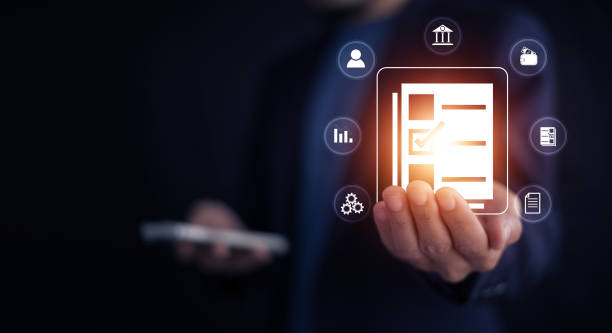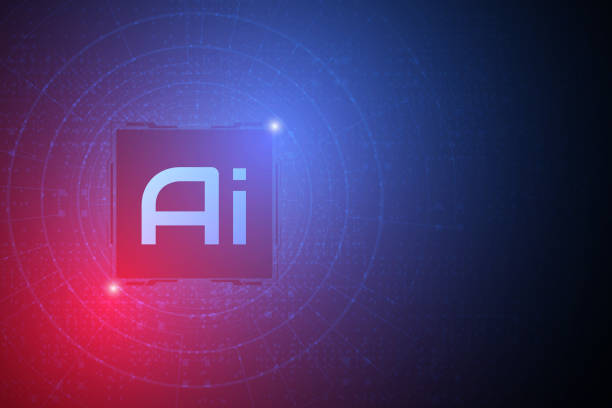What is On-Page SEO and Why Does It Matter?
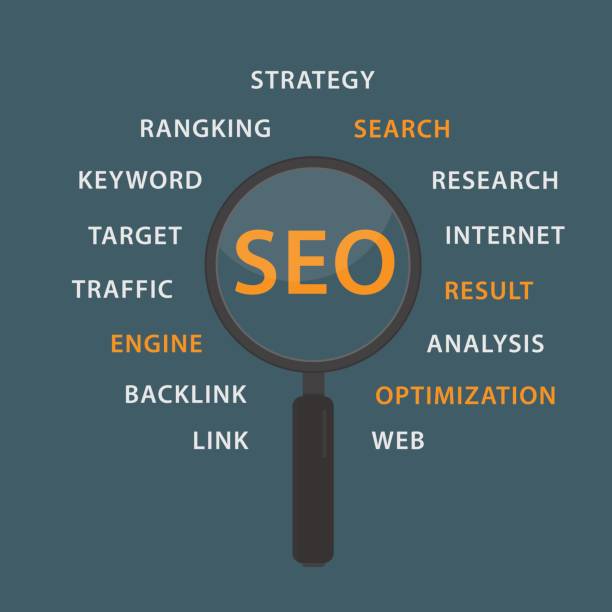
On-Page SEO refers to a set of actions you take within your website to improve your site’s ranking in search engines like Google.
These actions include optimizing content, site structure, HTML tags, and page loading speed.
SEO helps search engines better understand your site’s content and show it to relevant users.
The importance of On-Page SEO lies in the fact that without it, even with the best content, you may not be able to achieve a good ranking in search results.
For example, if a page on your site is about “buying books online,” On-Page SEO helps Google understand exactly what this page is about and how it relates to user searches.
Optimizing the page title, meta description, using appropriate keywords in the text, and improving page loading speed are among these actions.
On-Page SEO will increase organic traffic, improve user experience, and ultimately increase your sales and revenue.
In other words, On-Page SEO acts like a strong foundation for your website, and without it, your building cannot function properly.
Tired of losing business opportunities due to not having a professional corporate website? Don’t worry anymore! With Rasaweb’s corporate website design services:
✅ Your brand’s credibility and professionalism will increase.
✅ You will attract more customers and sales leads.
⚡ Get a free consultation to get started now!
Keyword Research: The Foundation of On-Page SEO
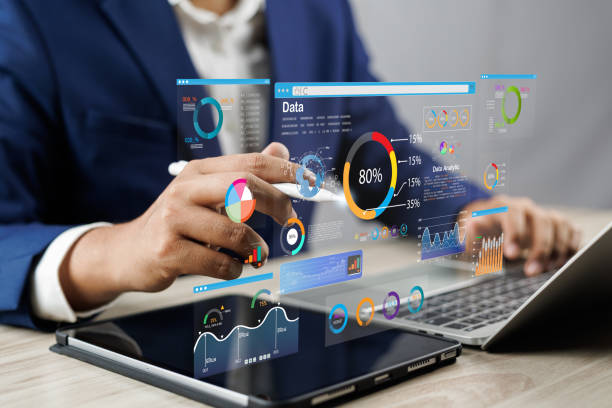
Keyword research is one of the most important steps in On-Page SEO.
With keyword research, you understand exactly what phrases users enter into search engines to find information, products, or services they need.
There are many tools available for keyword research, such as Google Keyword Planner, Ahrefs, and Semrush.
These tools help you find the search volume of different keywords, the level of competition, and related keywords.
After finding the right keywords, you should use them strategically in your site’s content.
For example, you can use the main keywords in the page title, meta description, subheadings (H2, H3, etc.), and the main text of the page.
On-Page SEO without keyword research is like driving at night without headlights; you don’t know exactly where you’re going and you might hit obstacles.
Remember that overuse of keywords (Keyword Stuffing) not only doesn’t help improve your ranking but may also get you penalized by Google.
The main goal is to produce valuable and relevant content for users, in which keywords are used naturally.
This helps Google understand your content more easily and display it to relevant audiences.
Content Optimization: The King of On-Page SEO
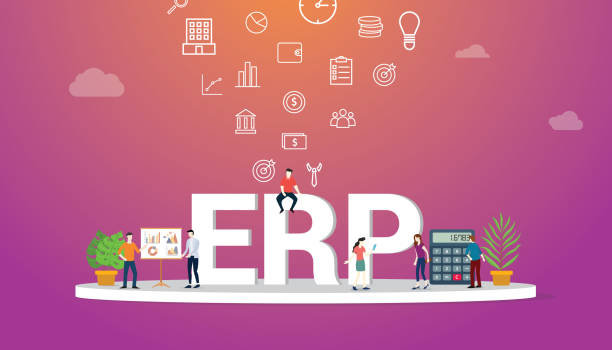
Content is the king of On-Page SEO! High-quality, valuable, and relevant content not only attracts users but also shows search engines that your site is a reliable and trustworthy source.
To optimize content, you need to pay attention to a few key points. Firstly, your content should be unique and original.
Avoid copying content from others, as this can lead to your site being penalized by Google.
Secondly, your content should answer users’ questions and needs.
Try to create content that solves their problems, provides useful information, and entertains them.
Thirdly, your content should be updated regularly.
By updating old content, you show search engines that your site is active and dynamic.
For example, if you have written an article about “the best smartphones of 2023,” it’s best to update it at the beginning of 2024 and add new information about the new phones.
This will improve your article’s ranking in search results.
Producing engaging and useful content increases conversion rates and improves your site’s On-Page SEO.
| Feature | Description |
|---|---|
| Content Quality | Unique, valuable, and relevant |
| Updates | Regularly and periodically |
| Structure | Readable, organized, and using headings and subheadings |
Optimizing Titles and Meta Descriptions
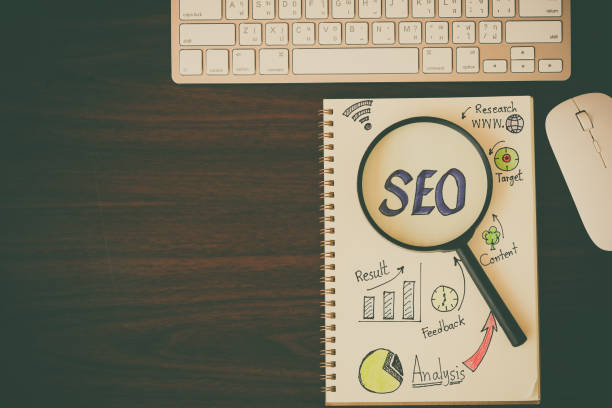
Title Tags and Meta Descriptions are two important elements in On-Page SEO that are displayed to users in search results.
The page title should be concise and engaging, and accurately describe the content of the page.
It is recommended that the page title be between 50 and 60 characters so that it is fully displayed in search results.
The meta description should also be a short summary of the page’s content and encourage users to click on your link.
It is recommended that the meta description be between 150 and 160 characters.
Using the main keywords in the title and meta description can help improve your ranking in search results.
For example, if a page on your site is about “buying shoes online,” the page title could be “Buy Shoes Online at the Best Price | Online Store … ” and the meta description could be “In the online store…
You can buy all kinds of men’s and women’s shoes at the best price and quality.”
Optimizing titles and meta descriptions increases the click-through rate (CTR) and, consequently, improves your site’s On-Page SEO.
Are you worried that your company’s old website will scare away new customers? Rasaweb solves this problem with modern and efficient corporate website design.
✅ Increases your brand credibility.
✅ Helps attract targeted customers.
⚡ Contact Rasaweb for a free consultation!
Proper URL Structure and its Importance
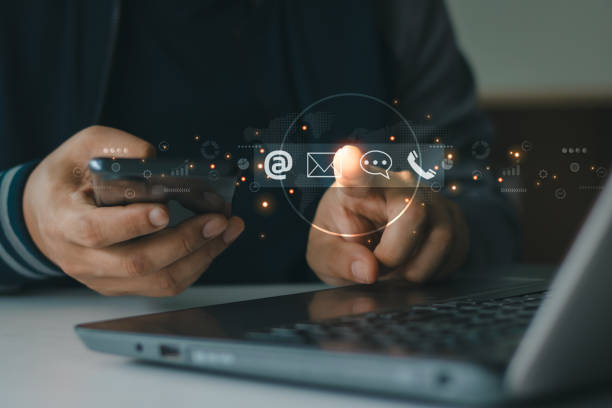
A proper URL structure is another important aspect of On-Page SEO.
Your site’s URLs (Uniform Resource Locator) should be short, readable, and contain keywords.
It is better to avoid using special characters and long numbers in your URL.
For example, instead of using the URL “www.example.com/page?id=12345”, use the URL “www.example.com/blog/seo-internal”.
Structured URLs help search engines better understand the content of the page and show it to relevant users.
Also, readable URLs are more attractive to users and increase the likelihood that they will click on your link.
Try to use a proper categorization structure for your URLs.
For example, if you have an online store, you can use a structure like “www.example.com/category/product-name”.
This makes it easy for users and search engines to navigate your site.
On-Page SEO correctly with a proper URL structure has a direct impact on user experience.
Optimizing Images and Videos
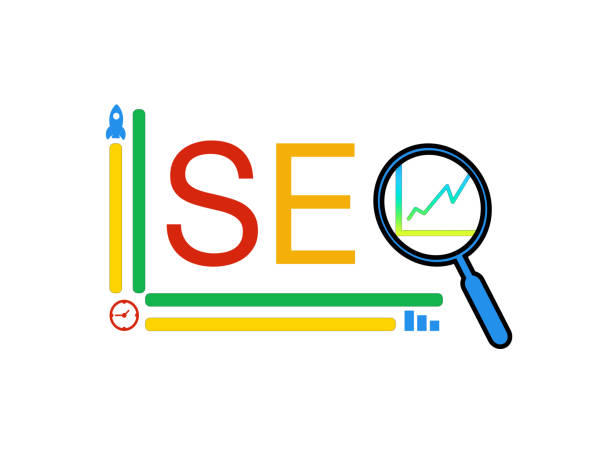
Optimizing images and videos plays an important role in On-Page SEO.
Images and videos can make your content more engaging and interactive, but if they are not properly optimized, they may slow down page loading speed and harm your site’s SEO.
To optimize images, you should use appropriate formats (such as JPEG or PNG), low file size, and descriptive file names.
Also, you should use the ALT tag to describe the images.
The ALT tag helps search engines understand the content of images and show them to relevant users.
For example, if you have a picture of a cat, the ALT tag could be “white cat with blue eyes.”
To optimize videos, you should use appropriate platforms (such as YouTube or Vimeo), write appropriate titles and descriptions for the videos, and use appropriate tags.
Also, you should embed your videos on your site and share them on social networks.
Optimizing images and videos not only helps improve your site’s On-Page SEO but also improves the user experience.
Page Loading Speed and Its Impact on On-Page SEO

Page loading speed is one of the important ranking factors in Google.
Users who enter your site expect pages to load quickly.
If the page loading speed is slow, users may leave your site and visit other sites.
Google offers several tools to test page loading speed, such as PageSpeed Insights and Lighthouse.
Using these tools, you can identify and fix problems with your page loading speed.
To improve page loading speed, you can use methods such as compressing images, enabling browser caching, using a CDN (Content Delivery Network), and optimizing codes.
Better On-Page SEO is impossible without proper loading speed, and improving page loading speed not only helps improve your site’s SEO but also improves the user experience and increases conversion rates.
| Factor | Solution |
|---|---|
| Image Size | Compress images using online tools |
| Browser Cache | Enable browser caching to store static files |
| CDN | Use CDN to distribute content across different servers |
Internal Linking and Its Importance in On-Page SEO
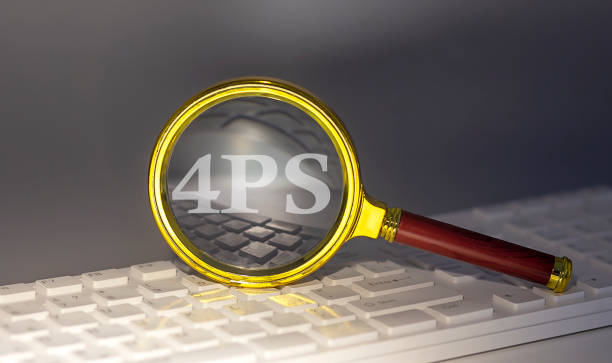
Internal Linking means creating links between different pages of your site.
Internal linking helps search engines better understand your site’s structure and identify related pages.
Also, internal linking helps users easily navigate your site and access the information they need.
For internal linking, you should use descriptive and relevant Anchor Text.
For example, if a page on your site is about “SEO training,” you can link to the “SEO training” page in another page that is about “keyword research” and use the link text “SEO training.”
Proper internal linking increases the ranking of important pages of your site in search results and improves the user experience.
On-Page SEO increases the power of the site with strong internal linking.
Remember that internal linking should be done naturally and avoid excessive linking.
Are you bothered by losing customers who have visited your site to shop?
Rasaweb is your expert solution for having a successful online store.
✅ Significantly increase your online sales
✅ Build trust and professional branding with customers⚡ Get a free consultation from Rasaweb experts!
Mobile Optimization; A Necessity for On-Page SEO

Given the increasing use of mobile phones for searching the internet, mobile optimization is a necessity for On-Page SEO.
Google has introduced Mobile-First Indexing since 2019, meaning that the mobile version of your site is considered the primary version for ranking.
To optimize for mobile, you should use responsive design, improve page loading speed, use readable fonts and large buttons, and avoid pop-up content and annoying ads.
Responsive design means that your site automatically adapts to the screen size of different devices (such as mobile, tablet, and desktop).
Optimizing for mobile not only helps improve your site’s ranking in search results but also improves the user experience and increases conversion rates.
Professional On-Page SEO also requires site optimization for mobile.
The Importance of User Experience (UX) in On-Page SEO
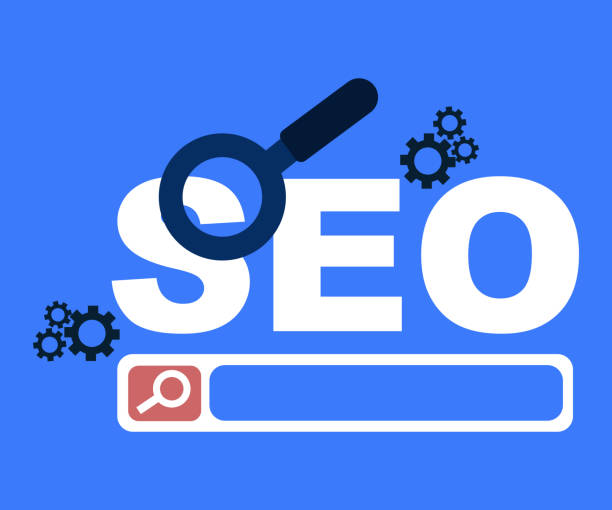
User Experience (UX) plays a very important role in On-Page SEO.
Google gives a higher ranking to sites that offer a good user experience.
Several factors affect user experience, such as page loading speed, site design, easy navigation, high-quality content, and interactivity.
Optimizing user experience includes improving site design, simplifying navigation, providing high-quality and relevant content, and creating interaction with users.
For example, you can collect user feedback, answer their questions, and use their feedback to improve your site.
You can also use A/B testing to test different designs and choose the one that performs best.
Improving the user experience not only helps improve your site’s On-Page SEO but also increases user satisfaction, increases conversion rates, and increases customer loyalty.
To have optimal On-Page SEO, you should pay attention to improving the user experience continuously.
Frequently Asked Questions
| Row | Question | Answer |
|---|---|---|
| 1 | What is On-Page SEO? | On-Page SEO refers to the set of actions that are performed within a website (on its pages) to improve the site’s ranking in search engine results. This includes optimizing content, site structure, and HTML codes. |
| 2 | Why is On-Page SEO important? | On-Page SEO helps search engines to better understand the content of the page and to determine whether that page is relevant and valuable to users’ searches. This better understanding leads to a higher ranking. |
| 3 | What is the first and most important step in On-Page SEO? | Keyword Research is the most important initial step. By finding the right keywords, it is possible to produce targeted content that is relevant to users’ needs. |
| 4 | What is the role of the Title Tag in On-Page SEO? | The title tag is one of the most important ranking factors and should include the main keyword. This tag is displayed in search results as the page title and affects the click-through rate (CTR). |
| 5 | What is the importance of Meta Description? | The meta description does not directly affect the ranking, but by providing an attractive summary of the page’s content in the search results, it can encourage users to click and thus increase the click-through rate (CTR). |
| 6 | Why is it important to use Headings (H1, H2, etc.) in content? | Headings help to structure content and improve readability for users and search engine crawlers. Using keywords in headings also helps the search engine to better understand the topic. |
| 7 | What does Image Optimization in On-Page SEO include? | This includes compressing images to reduce file size, using descriptive and related file names, and filling in the Alt tag (alternative text) with related keywords to help search engines understand the image content. |
| 8 | What is meant by Internal Linking in On-Page SEO? | Internal linking refers to creating links between different pages of a website. This helps to distribute page equity (Link Equity), improve user experience, and help search engine crawlers discover new pages. |
| 9 | Why is Page Speed important for On-Page SEO? | Page loading speed is a direct ranking factor and greatly affects user experience. Slow pages can increase the bounce rate and decrease user engagement. |
| 10 | What role does quality content play in On-Page SEO? | Quality content that is comprehensive, unique, and valuable to the user is the core of On-Page SEO. This content not only attracts and retains users but also sends positive signals to search engines and helps with better rankings. |
And other services of Rasa Web Advertising Agency in the field of advertising
Intelligent UI/UX: A new service to increase user engagement through a SEO-driven content strategy.
Intelligent UI/UX: An effective tool for user interaction through SEO-driven content strategy.
Intelligent Reporting: Professional optimization for analyzing customer behavior using marketing automation.
Intelligent Marketing Automation: A new service to increase customer behavior analysis by customizing the user experience.
Intelligent Website Development: An effective tool for user interaction with the help of intelligent data analysis.
And more than hundreds of other services in the field of Internet advertising, advertising consulting and organizational solutions
Internet Advertising | Advertising Strategy | Advertorial
Sources
On-Page SEO Guide: Everything you need to know about On-Page SEO
,What is On-Page SEO? On-Page SEO Site Training from Zero to One Hundred
,What is On-Page SEO? (+ Golden On-Page SEO Techniques)
,On-Page SEO: A Detailed Guide | Moz
? For the rise of your business in the digital world, Rasaweb Afrin is with you by offering innovative marketing solutions and fast website design and professional, to have a powerful and lasting presence.
📍 Tehran, Mirdamad Street, next to the Central Bank, Southern Kazerun Alley, Ramin Alley No. 6
“`

